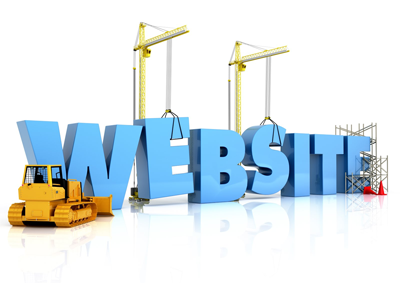As with any technical project, website development is no easy task. There are many “open fronts” that we must keep in mind. And we should follow the appropriate steps for developing a website to avoid leaving things out in the process.
In this week’s article, we want to define the steps for creating a website in an abridged way — from the moment when we have to define our project down to its launch and promotion.
1. Define your website’s objectives
This is the first item on our list of steps for developing a website for an obvious reason. Although it may seem quite generic, by objectives we mean that you need to have a business plan. What do you want to achieve with your website? Is it an e-commerce? Is it a services website? Establishing objectives will help you define your website’s contents and know what kind of website you need for your company.
For example, if your goal is to obtain more leads and boost your contact with potential customers, you need to show what you offer in an attractive way and ensure that customers can contact your company easily.
If — on the contrary — you want to increase your Internet sales, you will have to focus on simplifying the payment process.
To achieve this you may not need any website development or website design expert. However, you may find it interesting to have a business consultant at your side to know how to approach the project.
?? You might be interested | Web creation: 12+1 Questions to ask yourself before developing a site
2. Define your website’s contents
You need to keep in mind what you will be saying on your website. If you want to take SEO seriously, your website’s contents are going to have a direct impact on its positioning in search engines. And they are also in charge of convincing users to visit your website.
It’s essential that you define very well what you want to say in a first stage, as well as what terminology and kind of vocabulary you will be using. In any case, having an expert to tweak the end result will be of paramount importance. Having a good SEO copywriter and communicator will be key to obtaining an impressive result.
3. Make a mock-up and a wireframe
Don’t be afraid to take a piece of paper and get what you have in mind captured in it. A mock-up is nothing more than a sketch or rough draft of the website’s sections and its general structure.
You can define there your website’s main sections and how to navigate between them. But without going into details regarding the text they will contain. We are not leaving still the idea and conceptual level. The next step will have to be carried out by a website designer. Or you can do it yourself if you are wireframe tool literate. It’s really nothing more than revamping your initial mock-up into a digital model that offers interaction.
4. You will now need a website design
Once you have made up your mind on how you want the interaction to be, you have to work hard on achieving a good website design. On many occasions, we want to participate actively in it. And that’s fine, but we should also not interfere too much with the designer’s work. Your website should always address user-friendliness and employ proportions in a way that grants that your website’s design works effectively.
For instance, we cannot abuse the use of red in a website’s design — as much as we all are very fond of this colour. We must pay heed to our designer’s advice and find a balance between our corporate colours and those that are comfortable for the user.
Sometimes we may ask a friend that turns out to be a programmer for a helping hand. But be careful! A programmer is not a designer. Finding a professional designer to carry out what we need to achieve our goals is key. Outsourcing your website’s design may be a good option in such cases.
5. Website development: It’s time to get code written
Are you ready for the most complex part? It’s time to develop the project that we’ve been contemplating all this time. Depending on your project’s complexity, you will be needing a developer, two of them, or even a whole website development team.
The speed with which you want to get the job finished also has a great impact on this. The bigger the urgency, the bigger the team and the number of development hours we’ll need to devote to the project.
Keep in mind that the development process will be proportionally simpler depending on how much you’ve been getting a head start on work. It’s recommended to have all the content and design aspects ready before you start looking for a developer.
6. Don’t forget to be ‘Mobile-friendly’
This section is very much related to website design and website development, even if we discuss it now separately. We’ll address it on its own because it’s becoming increasingly important to attract mobile users. And for search engine positioning.
Any SEO expert will advise you to start with mobile design and then carry on to website design. It’s what they call ‘mobile-first’ design. Even so, it’s not mandatory at the moment. What you should contemplate is having a totally ‘responsive’ website that’s adaptable to any mobile device.
You may also be interested in | WordPress plugins to design a website without typing in any code
7. Keep testing and carry on testing
We must do this every time we finish a development stage, not only once the website development process is complete. Testing is essential, especially if carried out by people who have not taken part in the product’s development and design. It will help us understand what we should improve in terms of design and user-friendliness.
And it will also allow us to detect possible issues and see which things must be corrected before launching our website.
8. Launching your website
Once you have reviewed all the aspects mentioned above, you must get ready for your website’s big release. However, before doing so you’ll definitively have to get a couple of things done to ensure it’s a spectacular launch.
- Prepare a press release. It should explain who you are and what novelties your products entail when compared with those of your industry rivals.
- Have relevant information and images of your brand. Prepare images, logos, team photos, etc.
- Generate contacts to promote your site. It’s advisable to work on this before launching your website and to plan actions involving collaborators or influencers of your industry.
9. Marketing strategy
This section goes beyond website development and delves deep into online marketing. You must keep your strategy in mind if you want your website development to be successful. If you followed our recommendations on optimising content for SEO, you may retake your digital marketing strategy from this point. Bet on a website positioning strategy and start growing in the first months.
10. Analysing your results and improving them
How can you know if you have attained your initial goals? Surely you remember the first item in this list on the steps for developing a website: defining objectives. Analytics will help you define if you have achieved the goals and objectives set in the beginning. If you have succeeded, that’s great: let’s set new challenges!
However, if you have not succeeded in attaining them you must establish why find out where is the problem located and set new modifications to be able to achieve them. Are you ready?
This is an ongoing process for any company taking the leap into the online world. It’s often complicated to find the right professionals for each stage. For this reason, at Yeeply we are willing to help you find the right expert for every development stage. What stage are you in? We’re sure we can help?














